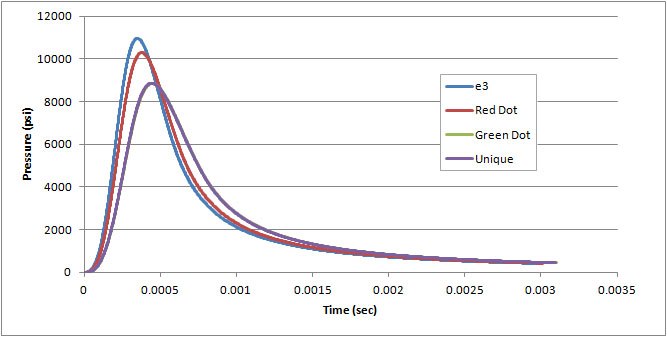
Based on posts and feedback in various online reloading forums it appears that many shooters have a fuzzy notion of firearm recoil, especially when it comes to shotgun recoil and what reloaders can do to mitigate it. The following is an attempt to present shotgun recoil from several points of view, to illustrate it with several real examples, and perhaps to give a better understanding of the phenomena. In particular, we will address throughout the discussion the common belief that shotgun powders that have faster burn rates recoil more, more sharply or more harshly than powders that have relatively slower burn rates.
We will begin with developing the equation for free recoil energy, the conventional measure of the work imparted to the gun during the shot, work that must be overcome by the shooter to control the firearm. Later we will look at the common objections to this equation, all of which claim that various important parts of the event are omitted and therefore the conventional calculation is incomplete. To do this we will need to dig deeply into the details of the recoil event. I'll try to keep things entertaining and spend more time explaining physics instead of just presenting mathematics.
The concept begins with the assumption that there is no change in the forces the shooter exerts on the gun between the time the primer is ignited and the shot leaves the barrel. If this is the case, then the total linear momentum (the product of the mass and velocity of an object) of the shot, wad, powder and gun is conserved, that is, doesn't change:
(Ms + MW)Vs + MpVp = MgVg
or
(Ws + WW)Vs + WpVp = WgVg
where
Writing the conservation of momentum in terms of weight and solving for the gun speed gives:
Vg = [(Ws + WW)Vs + WpVp] / (7000 Wg)
This is the speed at which the gun pushes back against the shooter's shoulder as the wad/shot exits the barrel. A better measure of how much work the gun does on the shooter is the kinetic energy of the gun immediately after firing. The kinetic energy of the gun is ½ MgVg2, also called the free recoil energy ("free" since we've assumed that the force the shooter exerts on the gun during the shot is constant):
| Free recoil energy | = ½ MgVg2 |
| = WgVg2 / (2 g) | |
| = [(Ws + WW)Vs + WpVp]2 / (2 × 70002 × Wg × g) |
This is the amount of work that the gun exerts on the shooter because of recoil, and is also the work that the shooter must exert on the gun in order to control it to a stop.
As examples, let's look at four 12-gauge target loads, direct from the online Alliant reloading data, that have these common components and characteristics:
The powders were chosen to span the entire range from "fast" to "slow" relative burn rates for this application. The powder type and amounts are as follows, along with the amount of free recoil energy from an 8-lb gun, using the equation above:
| Powder | Amount | Max Pressure | Gun Speed | Free Recoil Energy |
|---|---|---|---|---|
| e3 | 17.2 gr | 10,960 psi | 12.8 ft/s | 20.5 ft-lb |
| Red Dot | 18.3 gr | 10,300 psi | 12.9 ft/s | 20.8 ft-lb |
| Green Dot | 21.0 gr | 8,900 psi | 13.2 ft/s | 21.6 ft-lb |
| Unique | 22.0 gr | 8,900 psi | 13.3 ft/2 | 21.8 ft-lb |
Table 1: Four example loads
Many reloaders and shooters report that they are convinced that slower powders (that is, powders that have relative burn rates that are longer than powders with shorter relative burn rates) shoot "softer" than faster powders, a belief that is directly contradicted by the calculations above. The recoil from slower shotgun powders is often described as less harsh, developing more gradually over a longer period of time, and/or resulting in more of a "shove" than a "jab." However, the free recoil energy calculated above is clearly smallest for the fastest powder and largest for the slowest powder, without any additional and subjective adjectives like "soft" or "harsh."
Based on this divergence between simple physics and conventional wisdom based on perceptions, the free recoil energy concept is often disparaged as incomplete, inadequate and/or inaccurate. The most common objection to the free recoil energy calculation is that it does not take into consideration the maximum pressure, which is generally higher for faster powders, or some other detail of the pressure-time curve when the wad/shot is under acceleration in the barrel of the gun.
In the following sections we will dig more deeply into shotgun interior ballistics and try to shed some better light on the how and why of shotgun recoil.
When a shotgun is fired, the primer ignites the powder, which burns rapidly and produces large volumes of gas. The gas pushes the wad/shot down the barrel as it expands, accelerating the wad/shot until it exits the muzzle. The force of the expanding gasses (or rather, what remains once the friction between the wad and barrel is overcome) on the base of the wad is also exerted on the gun, accelerating it backwards into the shooter's shoulder. Once the wad/shot leaves the barrel, the combustion gasses are released into the atmosphere creating a "jet effect" that gives the gun a last push backwards into the shooter.
The mechanics of expanding gasses is quite complicated and requires fairly specialized mathematics. I contacted an expert (who prefers not to be identified) who works in the field of modelling the internal ballistics of small arms. He was kind enough to produce a pressure-time curve for the Red Dot load given above. This computer simulation generated approximately 1200 ft/s from a 32" shotgun barrel with a peak pressure very close to that reported by Alliant. In his opinion, this simulated pressure-time curve is sufficiently accurate and detailed for the purposes of exploring the effects of shotgun recoil. He then produced pressure-time curves approximating the other three loads given in Table 1 above by altering the powder charge weight, density and burn time parameters of the simulation. The four simulated pressure-time curves are shown below, along with various characteristics of the curves:

Figure 1: Pressure vs time (simulated)
| Muzzle Velocity | Maximum Pressure | Time in 32" barrel | Time to Maximum Pressure | |
|---|---|---|---|---|
| e3 | 1201 ft/s | 10,950 psi | 2.99 ms | 0.35 ms |
| Red Dot | 1208 ft/s | 10,292 psi | 3.01 ms | 0.38 ms |
| Green Dot | 1206 ft/s | 8850 psi | 3.10 ms | 0.45 ms |
| Unique | 1206 ft/s | 8858 psi | 3.10 ms | 0.44 ms |
Table 2: Simulated pressure-time details (1 ms = 0.001 seconds)
The Green Dot and Unique pressure-time curves are nearly identical, and are indistinguishable in Figure 1.
The pressure-time curves in Figure 1 for the faster powders (e3 and Red Dot) exhibit higher peaks that reduce quickly, and more quickly than those of the slower powders (Green Dot and Unique). The areas under these curves are the total impulse that the pressure exerts on the wad/shot to accelerate them to the muzzle velocity. Since all of these pressure curves produce the same muzzle velocity with the same shot/wad, the areas under them must be equal. Fast powders rely on higher peak pressures that rapidly decrease, while slower powders have smaller peak pressures that decrease less rapidly.
Let's take a look at what is happening to the wad/shot during this time. For those who are interested in the mathematical details, the momentum of the wad/shot changes as they move down the barrel because of the net effect of the gas pressure and wad/barrel friction. The pressure-time function, multiplied by the bore area and less the friction, can be numerically integrated to find the speed of the wad/shot at any time:
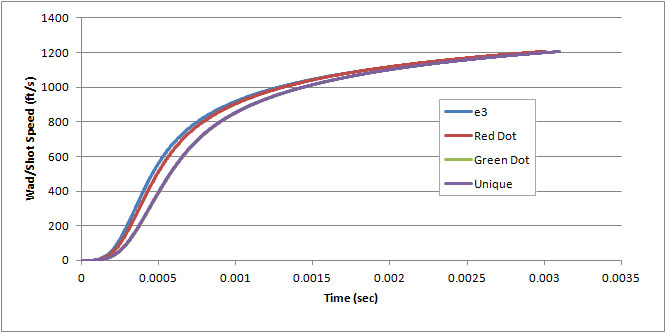
Figure 2: Wad/shot speed vs time (simulated)
Again, the Green Dot and Unique loads are so similar they cannot be distinguished. Not surprisingly, the fastest powders accelerate the wad/shot down the barrel faster than the slower powders, and expel the wad/shot from the barrel slightly sooner than slower powders.
We also note that these curves clearly show that the wad/shot achieves about 90% of the muzzle speed in about 2/3 the time it spends in the barrel, and the speed is increasing all the way to the muzzle. Shorter barrels will result in smaller muzzle speeds, exactly how much is not readily apparent from looking at the speed-time curve (more on this below).
Since we have the data, we can also look at the position of the wad/shot in the barrel as a function of time. This is obtained by numerically integrating the speed-time curves of Figure 2:
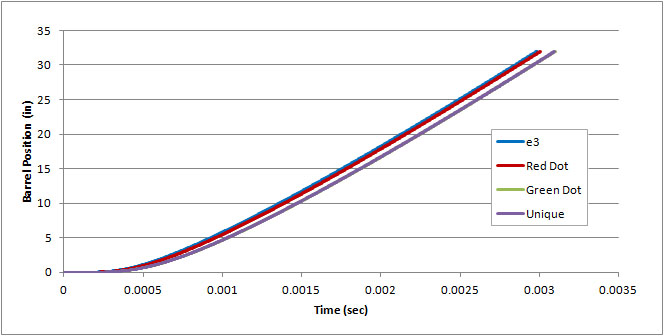
Figure 3: Wad/shot position vs time (simulated)
Once again, the faster powders have moved the wad/shot farther along the barrel at any given time, and expel the wad/shot from the muzzle in a slightly shorter time than do the slower powders.
It is helpful to look at this data in a slightly different way, as functions of barrel position instead as functions of time. Below are the pressure curves plotted against barrel position:
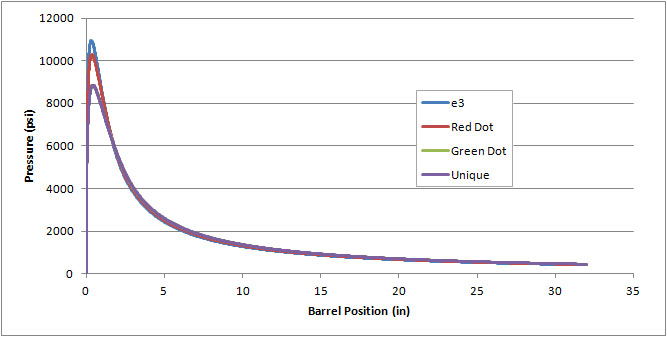
Figure 4: Pressure vs barrel position (simulated)
Note how similar all four of these loads look in this view. The maximum pressure develops and drops off quickly in all four loads before the wad/shot moves more than an inch or two - well within the hull itself. In each case the pressure drops to about 10% of maximum before the wad/shot moves about 15" down the barrel. These graphs also illustrate why a shotgun barrel can taper so quickly from the chamber to the barrel, the high pressures are only experienced when the wad/shot is still within the first 3" or so of the barrel. The wad/shot speed vs barrel position is below:
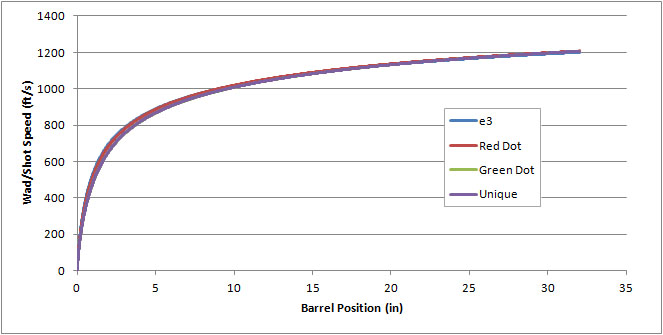
Figure 5: Wad/shot speed vs barrel position (simulated)
It is remarkable how closely the speed of the wad/shot develops down the barrel with these four loads; these curves are nearly indistinguishable from each other. It is easy to see that most of the speed is developed in the first 18" or so of the barrel, and each additional inch of barrel over 18" adds less speed to the wad/shot before it exits the muzzle.
Now that we have a good idea how the pressure has acted on the wad/shot, accelerating it down the barrel and out the muzzle, let's turn our attention to what happens to the gun during this time.
As the high pressure gasses accelerate the wad/shot down the barrel, they also accelerate the gun backward into the shooter's shoulder. As a result of the shot, the fairly massive gun (compared to the shot/wad) is moving backward. The gun gains kinetic energy in this process, and the shooter has to do work on the gun, that is, exert forces over some distance, in order to control and stop it.
It is important to understand that humans do not feel forces directly, and in fact it is not possible to directly measure any force. We can only measure the effects of forces on objects and then calculate and/or infer the forces that cause those effects. When you step on your bathroom scale you are not really measuring your weight, you are measuring the deflection of a mechanical spring or the amount of deformation in an electronic load cell. The spring deflection or load cell deformation is then converted or translated (by levers to the scale dial or through electronics to the display) into a number that describes your weight. When you step on the gas in your car, you know that you are accelerating only because you feel yourself sink deeper into the seat and feel your internal organs shift slightly, allowing you to infer that you are experiencing a force.
Because we cannot directly measure forces, and because forces are often caused by moving things, it is rarely useful to talk about forces in the absence of the time or the distance through which they act. For this reason, engineers and physicists often use the concepts of work, energy and power to describe the effects of forces on objects. Work combines a force with the distance through which it moves, power is work exerted over time. Energy can be the potential to do work (such as that stored in a spring) or the motion that results from work being done on something. Work, energy and power are far more useful concepts to describe the effects of forces since they take into account the motion of the object in question, especially when we remember that the resulting motion is all we are able to sense and measure.
This is exactly why the free recoil equation calculates the kinetic energy of the gun and not a force. Force by itself tells only a part of the story. How that force develops in time and space, and the resulting motion of the thing the force was applied to, are also important to complete understanding. The kinetic energy of the gun upon firing is the important quantity, and one can think of controlling and stopping the gun's motion in terms of either the work (force times distance) or the power (force times velocity) that must be applied.
When we shoot a shotgun, we know that it has fired because it makes a noise, it sometimes produces visible fire and smoke, and it moves backward - the backward motion we call recoil. The gun very quickly develops its own speed as a result of the shot, exactly what speed and how fast it develops will be described below. The shooter, standing the way of the now-moving gun, is suddenly aware that the gun is moving. How fast the gun moves, how quickly the motion develops and the mass of the gun are measurable quantities and will be the focus of the following discussion.
Given the wad/shot speed as a function of time, Figure 2 above, we can apply the conservation of momentum to the gun/wad/shot system to find the speed of the gun at any time, or we can numerically integrate the pressure-time functions of Figure 1 and apply them to the gun. Either of these approaches will give the gun speed as a function of time, but only until the wad/shot leave the barrel. As the wad/shot leave the barrel, the jet effect of the rapidly expanding combustion gasses suddenly released into the atmosphere acts on the gun and gives it another, final push backward. Combining these effects give the speeds of an 8-lb gun firing our four example loads, as a function of time:
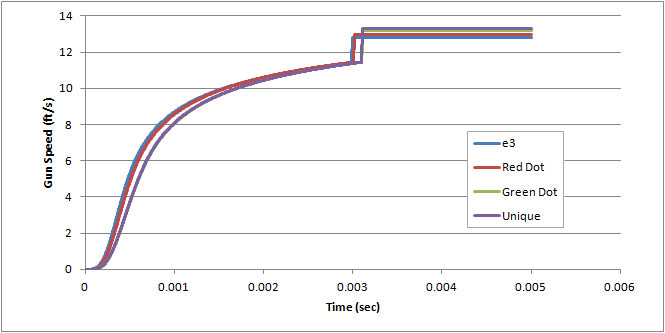
Figure 6: Gun speed vs time (simulated)
Recall that the wads/shot of these example loads leave the barrel at about 0.003 seconds. The graphs above run a bit past that time so that we can clearly see how the jet effect changes the gun speed as the wad/shot are expelled from the muzzle. The gun speed increases all during the time that the wad/shot is in the barrel, and takes a significant jump as the wad/shot exits the muzzle. After all of the assumptions, simulations and mathematics applied in this discussion, the final gun speeds in Figure 6 are well within 1% of those predicted by the free recoil energy equation (listed in Table 1 above), giving us confidence that we are examining the same phenomena, just in much greater detail.
The gun speeds develop slightly quicker with faster powders than slower powders while the wad/shot are still in the barrel, consistent with how the wad/shot speeds develop. However, due to the increased jet effect (which is proportional to the amount of powder used), the slower powders produce higher final gun speeds than the faster powders.
A brief word about barrel porting. Shotgun barrels are often ported, that is, a series of small holes are introduced through the barrel wall near the muzzle. The purpose of porting is to reduce recoil, and Figure 6 shows exactly how this might work. If we were able to bleed off some of the high pressure gas just before the wad/shot exit the muzzle, we might be able to reduce the size of that jet effect step, and thus reduce the total recoil speed and energy. This is a great plan, however one that does into quite work out in practice.
The holes used in most barrel porting are fairly small, and a series of holes are used to increase the total porting hole area to the bore area or even slightly larger. However, it is very difficult to get high pressure gas to flow through a small orifice. The higher the pressure and the smaller the orifice the more likely the flow will be "choked," that is, restricted from flowing freely. In order to be really effective, the size and number of barrel ports would have to be very large, each comparable to the bore area.
Also note that barrel porting can do nothing about the gun speed developed as the wad/shot travels through the barrel, it can only attempt to reduce the final step due to the jet effect. While significant, that step is still only a fraction of the gun speed developed as a result of the shot.
Another interesting bit of information is the distance the gun has moved during the firing event. Numerically integrating the gun speed gives the position of the gun as a function of time:
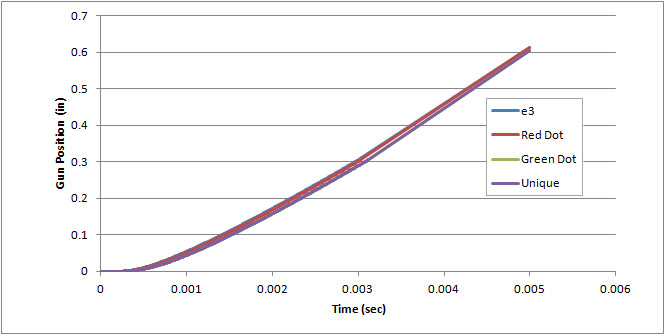
Figure 7: Gun position vs time (simulated)
Recall again that the wad/shot leaves the gun about 0.003 seconds after firing, at this time the gun has moved into the shooter about 0.3 in., compressing recoil pads and devices, and moving the shooter backward. This backward motion will continue until the shooter does work on the gun to control and stop it, either through moving backwards with the gun or tensing muscles to exert additional forces.
Felt Recoil
The discussion above purposefully concentrated on the physical phenomena of firearm recoil and not the human perception of firearm recoil, commonly referred to as "felt recoil." Every gun that is fired produces recoil energy as described above, however whether that recoil is tolerable or not highly depends on the shooter. Physics provides the motion of the gun, and describes precisely what happens as a result of the process. Felt recoil, on the other hand, is the process by which the shooter reacts to and absorbs the recoil energy produced by the shot. Felt recoil depends on many factors, some of which are (in no particular order)
Felt recoil is not generally measurable in any sense, however there are steps that can be taken to make any recoil experience more tolerable:
Human Perception
The fastest nerves in the human body are in the ears. Auditory nerves in good condition can distinguish distinct events about 0.015 seconds (15 ms) apart. Human eyes are slower to react and can detect separate events in about twice this time, or about 30 per second - this is how movies fool the eye/brain into accepting that a series of rapidly displayed still images is smooth motion. Skeletal nerves react far slower yet, normal perception times for skin stimuli are in the range of 0.10-0.15 seconds, with actual reaction times about twice the stimulus time.
Contrast human reaction times against the times seen above for the internal ballistics of a typical shotgun. The four example loads have exited the muzzle in about 0.003 seconds - about 30 times faster than the shooter can react to the motion This is a good thing, for if the shooter were able to physically react as the shot is moving within the barrel, accurate shots would be impossible. Instead the shot is well on its way to the target before the shooter is even aware that the gun is fired.
Many, many milliseconds after the shot is gone from the gun the shooter finally becomes aware that the gun has fired, mainly because the 8-lb gun is moving backwards into his/her shoulder. Because of the speed of firing event, and the slowness of human nerves, all the shooter can sense from the event is the final result, that is, the gun suddenly moving backwards. The details of how that motion develops in the first few milliseconds of the firing event occur far faster than the shooter can perceive them, and are therefore completely lost.
But what about those who say they can tell the difference between fast and slow shotgun powders, and that slow powders shoot softer than fast powders?
Take a look at Figure 8 below, the recoil energies of our four example loads as functions of time. The time scale has been taken out to 50 ms, over 15 times the duration of the barrel travel and approaching the time that the shooter will finally be aware that the gun has fired, because it is suddenly pressing back into his shoulder.
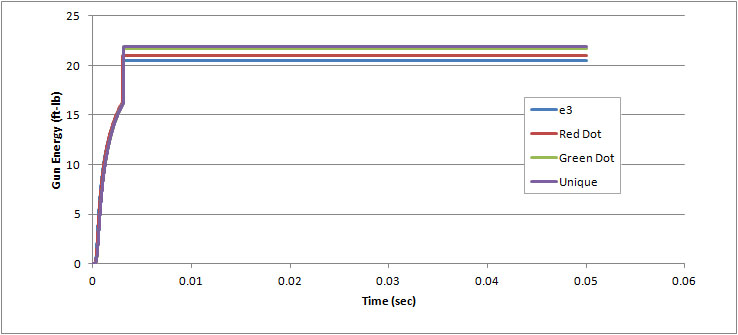
Figure 8: Gun energy vs time (simulated)
At this time scale, the details between these four loads - loads that span the useful range of slow-to-fast powders for this type of shell - are completely lost. The only perceptible difference between the loads is in the final gun speed. Note again that the small differences in gun energy are directly at odds with the "conventional wisdom" that slow powders shoot "softer" than fast powders. We recall that we had exactly these results when we looked at the free recoil energy calculation, but hopefully we now understand the physics of internal ballistics and firearm recoil much better.
We began our discussion with the free recoil equation, saw how it is derived and how it characterizes four similar common target loads. We examined the common complaints of the free recoil energy concept, and examined in detail the internal ballistics, gun movement and human perceptions that are involved in the recoil event. We saw that large differences in the pressure signatures of different powders (Figure 1) produce the same wad/shot muzzle velocity is nearly identical ways (Figures 2-5), and by the time their effects are applied through the gun to the shooter those differences have very nearly disappeared except for the resulting motion of the gun (Figures 6-8). We have demonstrated that, on the scale of human perception, the recoil energy of the gun appears essentially instantaneously upon firing (Figure 8) and is simply a before/after type of phenomena without any perceptible internal details. And we have demonstrated that using the simple free recoil energy equation yields exactly the same information about the perceptible recoil motion of a shotgun as a complete mathematical consideration of the dynamics of the powder/wad/shot/gun system.
I hope that the explanations here have shed a little more light on a subject that many have experienced but few seem to be able to explain without confusion and/or resorting to feelings and perceptions. Even though the free recoil energy concept seems to ignore the details of the pressure-time curve, it in fact takes everything into account that is important and produces a concise and correct measure for the recoil energy produced by firing a shot. I hope that, as a result of this detailed explanation of the physics, some of you can better understand better how and why using the free recoil energy to describe recoil is the correct approach. We have seen (twice) that science predicts a total recoil impulse that is often at odds with long-standing beliefs and perceptions of shotgun shooting... but that is not the fault of the science, the mathematics or the concept.
You, dear Reader, get to decide for yourself whether slow powders shoot softer than fast powders, and you get to defend that belief with as much passion as you can muster. As for me, I'll stick with science and mathematics to explain the world and its workings, not slow and fallible human perceptions.